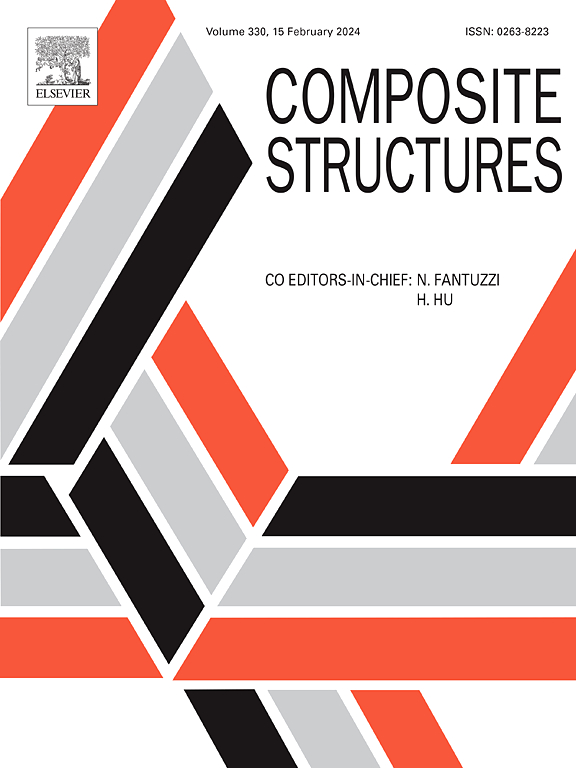Damage growth in multiphase composites subjected to thermo-mechanical fatigue loading based on phase field method
IF 7.1
2区 材料科学
Q1 MATERIALS SCIENCE, COMPOSITES
引用次数: 0
Abstract
Engineered materials such as particle composites, due to their intricate internal structure exhibit complex damage profiles. In this work, we employ the phase field method to numerically study the damage initiation and subsequent propagation in particle composites when subjected to mechanical and combined thermo-mechanical cyclic loading. The framework is implemented in Abaqus using user elements. Two different types of particles are considered, viz., stiff and compliant particles. The influence of mean load, elastic mismatch ratio and fracture toughness between the constituent materials are systematically investigated under thermo-mechanical cyclic loads. From the numerical study, it is inferred that: (a) the number of crack nucleation sites are directly linked to the reduction in the stiffness of the complaint phase and (b) damage is more pronounced in the case of a symmetrically inverting cycle. Furthermore, under thermal cycling, the stiff phase attracts the crack when the particles have higher thermal expansion compared to the matrix.
基于相场法的多相复合材料热机械疲劳损伤扩展研究
颗粒复合材料等工程材料由于其复杂的内部结构而表现出复杂的损伤特征。本文采用相场法对颗粒复合材料在机械和热-机械复合循环载荷作用下的损伤萌生和损伤扩展进行了数值研究。该框架在Abaqus中使用用户元素实现。考虑了两种不同类型的粒子,即刚性粒子和柔性粒子。在热-机械循环载荷作用下,系统研究了平均载荷、弹性失配比和材料间断裂韧性的影响。从数值研究中可以推断:(a)裂纹成核位置的数量与抱怨阶段的刚度降低直接相关;(b)在对称反转循环的情况下,损伤更为明显。此外,在热循环作用下,当颗粒的热膨胀率高于基体时,刚性相吸引裂纹。
本文章由计算机程序翻译,如有差异,请以英文原文为准。
求助全文
约1分钟内获得全文
求助全文
来源期刊

Composite Structures
工程技术-材料科学:复合
CiteScore
12.00
自引率
12.70%
发文量
1246
审稿时长
78 days
期刊介绍:
The past few decades have seen outstanding advances in the use of composite materials in structural applications. There can be little doubt that, within engineering circles, composites have revolutionised traditional design concepts and made possible an unparalleled range of new and exciting possibilities as viable materials for construction. Composite Structures, an International Journal, disseminates knowledge between users, manufacturers, designers and researchers involved in structures or structural components manufactured using composite materials.
The journal publishes papers which contribute to knowledge in the use of composite materials in engineering structures. Papers deal with design, research and development studies, experimental investigations, theoretical analysis and fabrication techniques relevant to the application of composites in load-bearing components for assemblies, ranging from individual components such as plates and shells to complete composite structures.
 求助内容:
求助内容: 应助结果提醒方式:
应助结果提醒方式:


